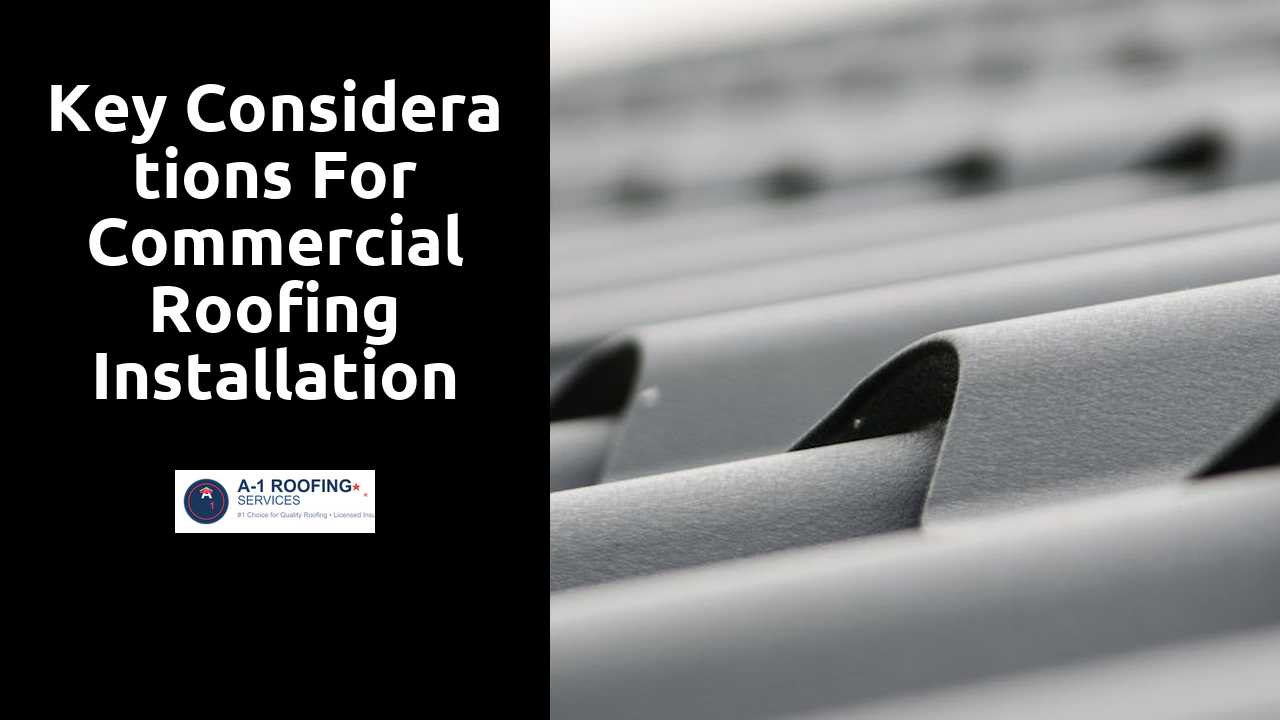
Key Considerations for Commercial Roofing Installation
Table Of Contents
Permits and Regulations
Obtaining the necessary permits is a critical step in the commercial roofing installation process. Each municipality has specific requirements that may vary widely, emphasizing the importance of thorough research at the outset. This ensures compliance with local laws and avoids potential fines or project delays. Homeowners and contractors should connect with local building departments to clarify what permits are required for their specific roofing project.
Understanding regulations is equally essential. Building codes govern everything from structural integrity to materials used, determining what complies with safety and quality standards. These codes often reflect local climate conditions, necessitating the use of particular roofing materials or systems suitable for the area. Awareness of such regulations can influence project design and installation approaches, ultimately supporting a successful roofing endeavor.
Navigate to these guys for detailed information.
Navigating Local Building Codes
Understanding local building codes is crucial for any commercial roofing installation. These regulations often dictate the materials, techniques, and overall design of the roofing system. Compliance with these codes helps ensure the project meets safety standards and can prevent costly fines or delays. Familiarizing yourself with specific local ordinances is essential before initiating any construction plans. Consulting with local authorities or experienced contractors can provide valuable insights into the necessary requirements.
Each jurisdiction may have its own unique set of regulations that affect installation practices. Factors such as climate, structural design, and historical preservation can influence these codes. Roofing professionals must stay updated on any changes in legislation that may impact their work. Engaging with local building inspectors early in the planning process can help clarify any questions and ensure that all aspects of the project adhere to current laws and guidelines.
Project Timeline
Understanding the project timeline is crucial for effective planning and resource allocation. Various phases are involved, starting from the initial assessment and design to the final installation and inspection. Each stage demands a specific time commitment to ensure quality and adherence to regulations. The general timeline can range from a few weeks to several months, depending on factors such as the size of the roof, materials being used, and weather conditions.
Delays can occur due to unforeseen circumstances. Inclement weather or supply chain disruptions may extend the project's duration. Clearly communicating the timeline with stakeholders helps manage expectations and align resources. Regular updates are essential to keep everyone informed of any changes, fostering a collaborative environment throughout the installation process.
Factors That Influence Installation Duration
The duration of a commercial roofing installation project can vary significantly based on several factors. The complexity of the roof design plays a crucial role; intricate shapes or multiple layers can require more time to complete. Additionally, the type of materials selected can impact installation speed. Heavier materials may necessitate extra caution and labor, while lightweight options might streamline the process.
Weather conditions are another major consideration during installation. Adverse weather can cause delays due to safety concerns or the inability to work efficiently. The experience level of the crew assigned to the project also influences timelines. Skilled professionals typically work more quickly while maintaining quality standards, potentially shortening the overall duration of the installation.
Safety Protocols
Establishing robust safety protocols is essential for any commercial roofing project. Workers must be equipped with personal protective equipment such as hard hats, safety glasses, and harnesses. Regular safety meetings should be held to reinforce guidelines and ensure that everyone is on the same page regarding potential hazards. Emphasizing the importance of awareness can significantly reduce the risk of accidents on the job site.
Implementing proper safety measures involves more than just providing equipment. A comprehensive safety plan should include specific procedures for working at heights, handling materials, and responding to emergencies. Clear evacuation routes and designated safety personnel can further enhance site safety. Training sessions should be conducted regularly to keep all team members updated on best practices and regulatory changes. This proactive approach not only safeguards workers but also contributes to the overall efficiency of the installation process.
Essential Guidelines for a Safe Worksite
A safe worksite is vital during any roofing project. All workers must be equipped with appropriate personal protective equipment (PPE), such as hard hats, harnesses, and non-slip footwear. Adequate training on equipment usage and identification of hazards plays a crucial role in preventing accidents. Regular safety meetings can reinforce these practices and address any concerns that arise during installation.
Maintaining a clean and organized work environment contributes significantly to overall safety. Tools and materials should be stored properly to avoid tripping hazards. Implementing clear communication among team members ensures that everyone is aware of potential dangers, such as overhead loads or changing weather conditions. Establishing a culture of safety not only protects workers but also enhances productivity on the job site.
Related Links
Essential Tools for Successful Commercial Roof InstallationStep-by-Step Guide to Installing Commercial Roofing Systems